Sarah Sundin's Blog, page 233
February 8, 2018
Today in World War II History—Feb. 8, 1943
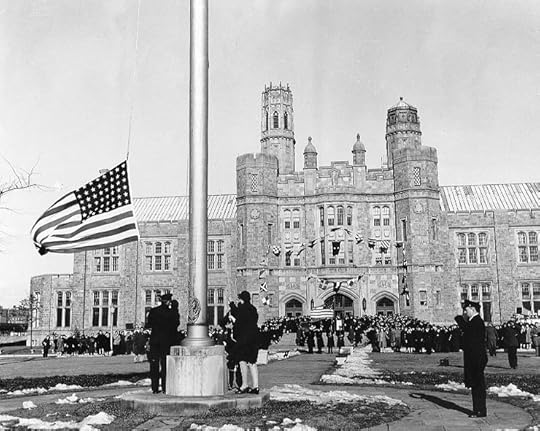
Raising the flag at US Naval Training Center, Hunter College, Bronx, NY, 8 Feb 1943 (US National Archives)
75 Years Ago—Feb. 8, 1943: First Chindit Raid begins: Brig. Orde Wingate’s Chindits (British and Indian troops) leave Imphal, India to raid Japanese supply lines in Burma.
Soviets launch offensive in Ukraine, take Kursk.
USS Hunter, the US Navy Training School for WAVES at Hunter College, opens in the Bronx, NY.

Brig. Orde Wingate (US Army Center of Military History)
February 7, 2018
The Sea Before Us – Tour of London
 To celebrate the release of The Sea Before Us, I’m conducting a photo tour of locations from the novel that I saw on my research trip to England and Normandy in September.
To celebrate the release of The Sea Before Us, I’m conducting a photo tour of locations from the novel that I saw on my research trip to England and Normandy in September.
Today—London!
February 8—Southwick House near Portsmouth
February 9—D-day at Sea
February 10—Omaha Beach
Don’t forget to enter The Sea Before Us Release Day giveaway, which includes lots of items I picked up on the trip! Giveaway runs Feb. 6-11, 2018.
London! A beautiful city brimming with millennia of history. When my hero, American naval officer Lt. Wyatt Paxton, arrives in London to help with planning for D-day, he’s overwhelmed by the privilege of living in the historic city. On his first day, he and his buddies tour the Westminster area, seeing Parliament, Big Ben, and Westminster Abbey.



And my heroine, Women’s Royal Naval Service Second Officer Dorothy Fairfax, was born and raised in London. She lives in Kensington and enjoys taking her dog for walks in Kensington Gardens, while her father enjoys feeding the ducks on the Serpentine, the long lake that winds through Kensington Gardens and Hyde Park. The Peter Pan statue plays a role in the story!








Dorothy serves with Allied Naval Expeditionary Force Headquarters (there’s a mouthful!) at Norfolk House on St. James’s Square in London. Meanwhile, Wyatt serves with the Western Naval Task Force, the American component of the naval force for D-day, at 19 Grosvenor Square in London. Grosvenor Square was called “Little America” during World War II due to the number of American headquarters located there, including Gen. Dwight Eisenhower’s Supreme Headquarters of the Allied Expeditionary Force, and even the American Red Cross. Today the US embassy is located there.




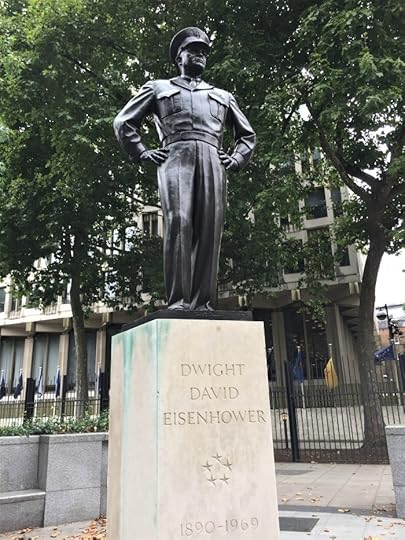
In early 1944, the Luftwaffe resumed air raids on London in what was called the “Little Blitz.” Wyatt experiences his first air raid, and he takes refuge in an Anderson Shelter in the garden of the Fairfax home. This Anderson Shelter is at the Imperial War Museum Duxford. And since Dorothy serves as a “Wren” in the Women’s Royal Naval Service, I had to include a picture of the Women of World War II monument, which shows outfits and uniforms from the many roles British women played during the war.
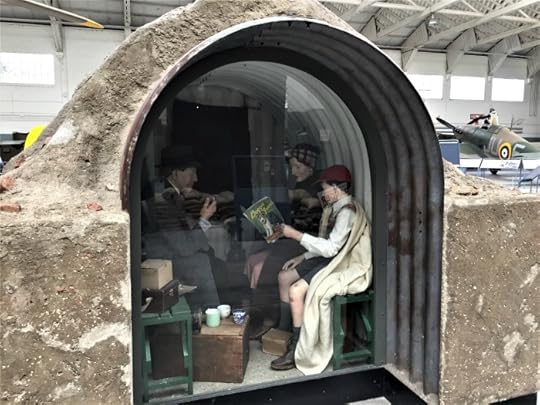

Hope to see you tomorrow for my photo tour of historic Southwick House near Portsmouth, where General Dwight Eisenhower made his famous final decision to launch D-day.
Today in World War II History—Feb. 7, 1943
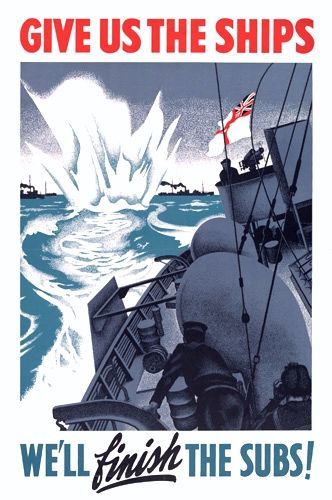
British poster, WWII
75 Years Ago—Feb. 7, 1943: In Allied Convoy SC-118 off Iceland, a wolf-pack attack by German U-boats leads to the loss of seven Allied ships and one U-boat.
US announces shoe rationing will begin on February 9—three leather pairs per person per year. (See Make It Do—Shoe Rationing in World War II).
February 6, 2018
The Sea Before Us Release Day Giveaway!
 To celebrate the release of The Sea Before Us, I’m giving away a prize pack of items I picked up in England and Normandy on my research trip! Come join me on Facebook Live Video on February 6, 2018 at 11 am PST/2 pm EST where I’ll describe the items and their significance to the story! The video will be available for viewing afterwards as well.
To celebrate the release of The Sea Before Us, I’m giving away a prize pack of items I picked up in England and Normandy on my research trip! Come join me on Facebook Live Video on February 6, 2018 at 11 am PST/2 pm EST where I’ll describe the items and their significance to the story! The video will be available for viewing afterwards as well.
To help you get “In the Mood” for the story, I’m giving away a package including:
The Sea Before Us totebag 
Teatime with Dorothy:
Teas from London in decorative tins
A tea infuser spoon
Jams from Harrod’s in London
Walker’s shortbread in a Scottie dog tin
Tea towel with Wrens poster, from the National Museum of the Royal Navy in Portsmouth
London at War:
“Instructions for American Servicemen in Britain” from the Imperial War Museum
“Victory in the Kitchen: Wartime Recipes” from the Imperial War Museum
British Home Front replica pack of brochures and ration books, from the Imperial War Museum
Souvenir London notepad and pen
To Normandy with Wyatt:
Sand I collected from Omaha Beach, in a commemorative jar
Commemorative D-day pen
Postcards from Vierville-sur-Mers, Longues-sur-Mer, and the Imperial War Museum


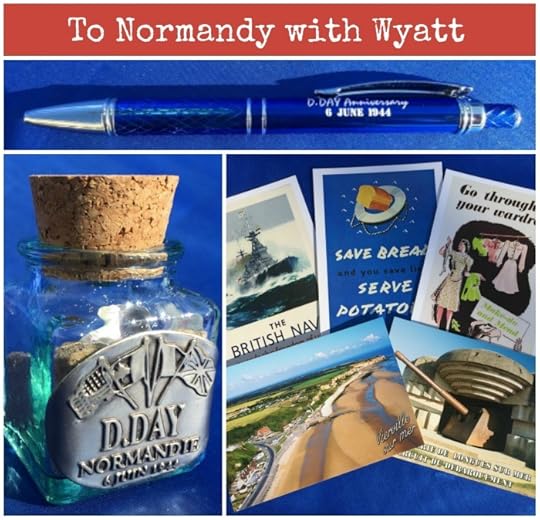
The giveaway is open February 6-11, 2018. US residents only please. The winner will be announced here on my blog on February 12, 2018.
Enter below with the Rafflecopter form below.
Today in World War II History—Feb. 6, 1943
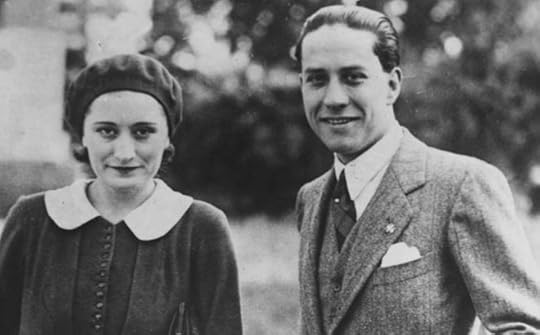
Edda Mussolini and Galeazzo Ciano, date unknown (public domain via WW2 Database)
75 Years Ago—Feb. 6, 1943: In Italy, Mussolini removes his son-in-law, Count Galeazzo Ciano, as foreign minister and takes over his duties.
US movie premiere of Disney’s Saludos Amigos in Boston (premiered in Rio de Janeiro 8/24/42).
February 5, 2018
Make It Do – Shoe Rationing in World War II
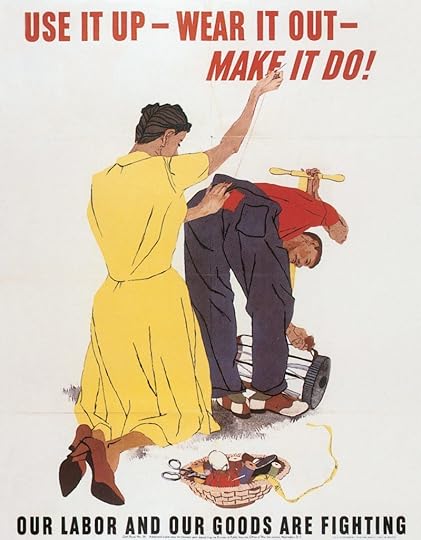 During World War II, many items were rationed in the United States, including shoes.
During World War II, many items were rationed in the United States, including shoes.Why Shoe Rationing?
Due to the serious rubber shortage (Make It Do-Tire Rationing in World War II), footwear made of rubber or with rubber soles was rationed or unavailable. Also, the military had a high need for leather, not just for shoes and combat boots, but for those popular leather flight jackets. As a result, civilians made do with less.
Rationing of Rubber Footwear
Starting September 30, 1942, men’s rubber boots and rubber work shoes were placed under rationing. To obtain a new pair, a man had to apply to the local ration board, prove he needed the shoes for essential industry—not for sport—and turn in the old pair. Galoshes and overshoes were not rationed because they used less crude rubber, but sportsmen couldn’t get boots, and sneakers were no longer produced.
Shoe Rationing

US rationing books owned by my mother and grandmother, WWII (Photo: Sarah Sundin)
On February 7, 1943, the United States instituted rationing of leather shoes to begin on February 9. Each man, woman, and child could purchase up to three pairs of leather shoes a year, using designated stamps in War Ration Book One, and later in Books Three and Four. To simplify the system, only six shades of leather were produced. However, the supply of leather continued to decrease. On March 20, 1944, the ration was reduced to two pairs of leather shoes per year. Shoe rationing continued until October 30, 1945.
Exceptions
The strict rule that the ration stamp had to be torn from the book in the presence of the retailer was lifted for catalog purchases. If you wanted an extra pair of shoes, you had to fill out a long application at the ration board, listing every pair of footwear you owned, and explaining why another pair was essential for your occupation and why another pair was required to prevent serious hardship.
What about Children?
No exceptions were made for children and their rapidly growing feet. Families pooled their stamps, and adults made do with fewer shoes to provide for their children’s needs. However, pediatricians and podiatrists complained publicly that shoe rationing would produce a generation of “foot cripples.”
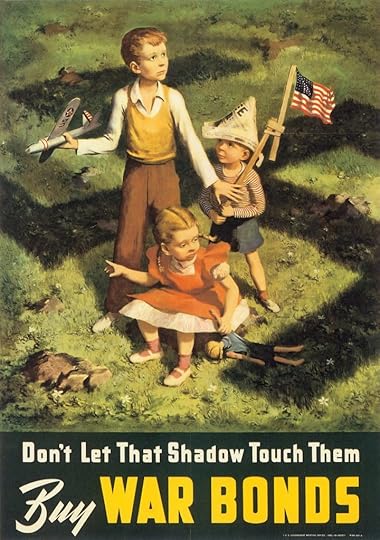 Making Do
Making DoTo make do with less, people took care of the footwear they already owned, keeping rubber boots clean, dry, and away from excess heat or cold, and repairing shoes and boots whenever possible. Shoes made of fabric, such as espadrilles, were not rationed and became fashionable. Women also turned to fabric purses and belts.
Some people did not make do. Theft and black market profiteering were a continuing problem. For example, on May 3, 1944, a man was arrested in Pittsburg, California for stealing seven pairs of shoes from a shipment. The June 8, 1944 issue of the Antioch Ledger reported his sentence—six months or $500.
Tales from a Shoe Store
This story comes from Charles Martin, who worked as a stock boy in a shoe store while he was in high school (1941 to 1943). He gave me permission to share his experiences.
“When the current stamp was about to expire, there would be a rush, mostly by women, to buy any pair of shoes, whether they fit or not. Later, when we got in new styles, they would exchange the ones they had bought for the new ones. Finally the store had to put a time limit on how long the first pair could be exchanged. The store would run ads in the paper when a new shipment of shoes was expected, and women would line up that morning to get a shot at the newest. Sometimes things got a little difficult because there would only be a few pairs in the most common sizes. More than once there were unpleasant situations that made the shoe clerk nervous.”
How would you do with only two or three new pairs of shoes a year?
Today in World War II History—Feb. 5, 1943
 75 Years Ago—Feb. 5, 1943: Nazis begin liquidating Bialystok ghetto; 1000 Jews killed, 10,000 sent to Treblinka extermination camp.
75 Years Ago—Feb. 5, 1943: Nazis begin liquidating Bialystok ghetto; 1000 Jews killed, 10,000 sent to Treblinka extermination camp.
February 4, 2018
Today in World War II History—Feb. 4, 1943

Gen. Bernard Montgomery (British government photo)
75 Years Ago—Feb. 4, 1943: Gen. Bernard Montgomery’s British Eighth Army crosses from Libya into Tunisia.
US European Theater of Operations (ETO) branches into North African Theater of Operations (NATO) in North Africa and Mediterranean under Lt. Gen. Dwight Eisenhower and ETO (Britain, Iceland, and continental Europe except Spain and Italy) under Gen. Frank Andrews.
February 3, 2018
Today in World War II History—Feb. 3, 1943
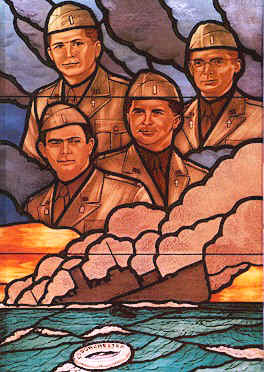
Four Chaplains stained-glass window at the US Pentagon (US government photo)
75 Years Ago—Feb. 3, 1943: US Army troop transport Dorchester is sunk by German U-boat U-223 off Greenland, 675/904 killed; four chaplains of different faiths give away their life jackets and go down with the ship, arms linked and offering prayers.
Britain allows 5000 Bulgarian Jews, mostly children, to emigrate to Palestine.
February 2, 2018
Today in World War II History—Feb. 2, 1943
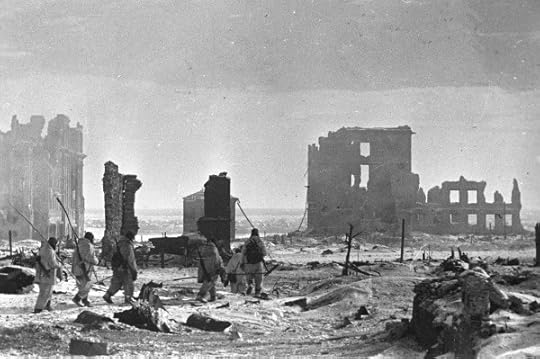
Soviet troops patrolling the ruins of Stalingrad, Russia (Russian International News Agency)
75 Years Ago—Feb. 2, 1943: German Sixth Army surrenders to Soviets in Stalingrad—91,000 prisoners are taken, of whom only 5000 survive the war.
Australians counterattack at Wau, New Guinea.



